Wondering how to memorize Korean words easily? Learning a new language can be challenging but exciting. In this article, we’ll share some fun and easy ways to help you remember Korean words better.
Whether you’re just starting or want to improve your language skills, we will help you build a strong vocabulary through 5 easy steps!
The guide on this page is a sample lesson taken from our Korean Word Memorization Course. If you’d like the PDF version of the guide on this page, you can get it here:
Contents
Korean Language Learning
Have you ever studied a list of words in a new language and seemed confident you knew them, but when it came time to recall those words in a make-or-break situation of real-life conversation, you couldn’t recall the word?
If so, you know that recognition does not equal recall.
Training for recall is seen as much more difficult than recognition, but it doesn’t need to be that way. World record holders in memory contests have even claimed that those of average IQ could easily use the same memory techniques and mnemonic devices to win world records themselves.
How to Remember Korean Words
In this guide, we’ll present you with stories and images you can use to improve your recall of common Korean words. These strategies will help you learn how to remember Korean words, which is key to learning how to speak Korean.
The Korean Word Memorization Course was born out of necessity after hundreds of students requested an easier way to learn Korean vocabulary.
Relying on rote memorization to learn Korean vocabulary is challenging (and often not fun!). The words and sounds of Korean can sound like gibberish in the beginning to speakers of other languages.
Repeating the words over and over in your head doesn’t help them stick. It’s possible to memorize them, but when it comes time to recall them, you will be stuck. This is the most common method utilized by language learners. When there’s a new vocabulary word to learn, they try to force its memorization through rote repetition.
For example, imagine you had the Korean word 이름 (ireum | the Korean word for “name”) on your list of words to remember. A typical student might simply repeat this word over and over in their head:
“이름 – name, 이름 – name, 이름 – name,” and so on.
While this can be successful in creating a memory, it is not practical because:
a) it takes an inordinate amount of time, and
b) no deep connections are formed in the brain that allow for recall.
Ever heard the phrase, “A picture is worth a thousand words?” It is indeed true. If you compare your brain’s ability to memorize the details in a picture with its ability to remember those same details verbally, you will notice the brain can much more easily remember visual cues.
The problem lies in the fact that it takes less time to write down a word than it does to sit down, generate an association, and produce a visual image. Visual images greatly reduce your learning time, but they also take a long time to create.
Korean Mnemonics
Mnemonics are methods that improve recall. They work by connecting the new information you learned and what you already know. These strategies use images, stories, rhymes, patterns, or other techniques that help memory retention.
The mnemonics in this guide will allow you to save hundreds of hours of rote memorization as you learn new vocabulary.
After learning the words, the next step is application in real conversations!
CLIPS Process
CLIPS™ Process by 90 Day Korean is a technique that involves creating mini “movie clips” in your mind. When you force your brain to create visuals for the information you’re reading, you create a much deeper association. It’s like reading a book versus watching a movie. When you read a book, your mind is forced to create visuals for the information you’re reading, and you create much deeper associations in your mind.
However, when you watch a movie, the action is much more passive since the director has already imagined how everything should look and presents it to you visually. No imagination is needed.
In this sense, using the CLIPS™ Process to learn Korean words is like reading a screenplay to a movie! You can picture the action taking place yourself.
The process involves 5 steps:
The CLIPS™ Process is made more powerful if you create your own stories. One of the most effective ways of enhancing your associations is to connect Korean words you want to learn to your personal life.
The examples we provide in this guide can be changed or tweaked however you see fit.
You can change the story, add extra background information to it, and associate it with a personal memory.
We encourage you to add more colorful details to the story. For example, if there is a man in the back story, truly visualize the situation and add extra details like the color of the hat he is wearing or what color his eyes are. You can even incorporate things related to Korean culture if you want. The more detail, the better!
Korean Words to Memorize
In using the CLIPS™ Process, you’ll be learning Korean words bidirectionally! This means that when you use the words in conversation, you’ll not only be able to recall it yourself, but you’ll be able to listen for the word and understand it when the other person uses it.
With that being said, let’s put what we just learned into practice. The most common Korean vocabulary words that you’ll come across as a beginner are verbs and nouns. Below, you’ll learn some of these words and how to remember them effectively.
How to Remember Korean Verbs
Now, let’s create associations for these Korean verbs based on the CLIPS™ process.
| Korean | English |
|---|---|
| (gada) | to go |
| (meokda) | to eat |
| (masida) | to drink |
| (gongbuhada) | to study |
| (unjeonhada) | to drive |
Here’s one example before we head on to each Korean verb listed.
오다 (oda) – To come
How to remember the Korean word 가다 (gada)
Association: 가다 “gotta” (got to)
When you gotta go, you 가다 go
We traveled so much as kids. Airplane travel happened more and more as we got older, but while we were young, we loved to go on good ol’ fashioned family road trips.
Dad understood that when nature calls, nature calls.
While some parents might tell their kids to hold on until they get to the next rest stop, my dad was very patient and understanding with me and my brother.
“When you gotta go, you gotta go,” he’d always say, pulling over whenever we requested.
How to remember the Korean verb 먹다 (meokda)
Association: If you’re hungry, eat a mug
Dad taught me lots of neat tricks as a kid.
Sometimes, I’d get really hungry between meals and start to get antsy.
“When’s dinner?” I’d ask. “Is it lunchtime yet?” “Can I have a snack?”
While most parents would just give in and give kids what they wanted, my dad taught me to be patient.
“If you’re hungry, eat a mug,” he’d say. Then, he made me laugh as he would pretend to eat a glass mug.
Sure enough, after having a good laugh and trying it myself, my hunger magically disappeared.
This is how I learned to be patient and always wait for dinner.
How to remember the Korean verb 마시다 (masida)
Association: DRINK mom’s mash
My mom was a great cook. Honestly, nearly everything she made was cooked to perfection.
However, there was one thing that my Dad, my brother, and I never liked eating, and that was mom’s mash (that’s what we called mashed potatoes in my family).
There was just something about it. It was just too runny, almost like a porridge.
Dad didn’t want to hurt Mom’s feelings, so he taught us a golden rule we never forgot:
“Drink mom’s mash. Don’t eat it.”We all learned to drink it down in one shot and cleared our plates without mom being any the wiser!
How to remember the Korean verb 공부하다 (gongbuhada)
Association: Dad rings a gong and says “boo” while I study
Dad loved playing practical jokes on me and my friends. One day, I had my friends over for a study session. We had a big test the next day, so we were cramming. Dad had hidden in the closet before we arrived and jumped out, ringing a gong and yelling, “boo.” He totally freaked us all out. Needless to say, our studies didn’t go so well that day.
How to remember the Korean verb 운전하다 (unjeonhada)
Association: Kim Jung Un eats jeon while he drives for good luck
Another one of Dad’s corny jokes he’d always tell when we were driving again involved Kim Jung Un (I’m almost too embarrassed to share):
Q: What does Kim Jung Un eat for good luck while he drives?
A: Un-jeon (운전).
How to Remember Korean Nouns
These are nouns and only require a simple association. The back story that you use with the Korean verbs is optional.
One of the reasons why the noun associations are much simpler is because there is no conjugation component. You don’t have to be concerned with the other forms of the noun because you’ll generally see the nouns used one way. Also, many of the nouns contain only one or two syllables, making them easier to create stories and associations for.
The more vivid and descriptive you can make the associations, the better they will stick in your mind. Once you create the stories, review them often. Remember that real-life applications will help solidify the associations, so get out there and make sure to practice the words in real-life situations!
For example, take a look at the Korean noun association below. In what situations could you practice this association?
집 (jip) – house
The above association is an easy one to practice as you go about your day. Anytime you pass by a house, image that there is a Jeep parked in front of the house. Then you’ll know that the word for “house” in Korean is 집!
Isn’t that a simple way to learn how to remember Korean words?
Now let’s see what kind of associations you can create for these five nouns:
| Korean | English |
|---|---|
| (jakga) | writer |
| (seonsu) | athlete |
| (yeonpil) | pencil |
| (mun) | door |
| (sigye) | clock |
Here’s how we would create them.
How to remember the Korean noun 작가 (jakga)
Association: Jack Black is a gossip 작가 (writer)
How to remember the Korean noun 선수 (seonsu)
Association: The 선수 (athlete) sued the sun because it was too hot
How to remember the Korean noun 연필 (yeonpil)
Association: Young people peel a 연필 (pencil)
How to remember the Korean noun 문 (mun)
Association: There’s a moon on the 문 (door)
How to remember the Korean noun 시계 (sigye)
She gave a 시계 (clock) to Sergei
Peg System
In addition to the CLIPS Process, we’ll also explain the peg system. It’s a well-known memorization trick to help memorize groups of words.
Take a look at the following list of ten words. Each word rhymes with the number it is associated with.
If we memorize this list, which is easy to do since it rhymes, we can easily associate new words we learn with the corresponding number. All we need to do is make a picture in our head.
Go ahead and memorize the list of ten words now! Do it as a rhyme: One, bun. Two, shoe. Three, tree. And so on.
Ready to move on?
Imagine we were memorizing the following list of five random English words:
1. Telephone
2. Gum
3. Ax
4. Hole
5. Head
We could associate each with the rhyme we just memorized.
The best way to do this is to make a strange and memorable image in your head. If you’re a visual learner anyway, this will be easy!
Making Pictures in Your Head
1. a bun with a telephone in it instead of a hot dog. Yummy!
2. a shoe with a big pink piece of bubble gum stuck to the bottom.
3. an ax chopping down a big tree.
4. a door someone kicked that has a large hole in it.
5. a person’s head that got stuck in a bee’s hive! Ouch!
Take a moment and make these pictures in your head now. Try it!
These are very memorable images that we can’t easily forget, and all we did was associate the new words with the word pairing list we had memorized before.
Did you make the pictures in your head? Well, then, it should be easy to recall the new list of five words now. Go ahead and try!
What was number 1? How about 2, 3, 4 and 5?
Ready to check? Let’s get to it.
Use the rhyme to assist you.
Check Your Answers
1. One, bun. A bun with a phone in it. Telephone!
2. Two, shoe. A shoe with a piece of gum on it. Gum!
3. Three, tree. An ax chopping down a tree. Ax!
4. Four, door. A door with a hole in it. Hole!
5. Five, hive. A head inside a beehive. Head!
And that’s not all. You could now recall these in any order, not just in the order they were presented.
For example, if asked what number 4 on that list was, you could easily remember it.
Four, door. Hole!
The associations stick and allow for easy recollection.
By memorizing the first rhyming list of 10 words, you create your own “peg” system for memorizing future vocabulary words. The words and numbers are the “pegs” that you can associate new words with.
Remember, this is just one way to memorize new words in the beginning, when appropriate. You won’t always rely on this. After using the new words you’re learning a few times in sentences and conversations, it will be second nature to use them, and you won’t need this technique.
When associating new Korean words with the list, you have to get creative with the system since you are using a foreign language and words that have no meaning to you in the beginning.
But there are a few techniques you can use to do so effectively, and the best way is to find words in English that sound similar to the Korean words or words that you could easily link up in your mind. There’s a large number of borrowed words from English in Korean that you can use to build your vocabulary quickly.
Let’s take a look at an example of how we could use this to learn the numbers 1-10 in Korean.
How to Learn Korean Numbers Easily
Remember, the peg system would just act as a reminder of the actual words.
In Korean, you may know that the numbers 1-10 are the building blocks for learning the rest of the numbers. It can be hard to associate them at first.
Here is the list:
| English | 한국어 (Korean) |
|---|---|
| One | 일 |
| Two | 이 |
| Three | 삼 |
| Four | 사 |
| Five | 오 |
| Six | 육 |
| Seven | 칠 |
| Eight | 팔 |
| Nine | 구 |
| Ten | 십 |
To do this, you may use the following system, for example, making these absorb pictures in your mind to help link up the peg system word and an English word that sounds similar to the Korean number word.
1. Eel One, bun.
A picture of a giant electric eel (일 | il) on a hot dog bun.
2. “E” Two, shoe.
A basketball sneaker with a gigantic letter “E” (이 | i) on the side.
3. Same Three, tree.
The silhouette of three identical (same) (삼 | sam) tall trees on a hilltop
4. Saw Four, door.
A saw (사 | sa) cutting through a door. Think of the horror movie “Saw.”
5. “O” Five, hive.
Honey Nut Cheerios. Os (오 | o) covered in honey from a beehive.
6. Yuk! Six, sticks.
Using sticks to poke at something “yucky” (육 | yuk) in the forest.
7. Chill Seven, heaven.
Arriving in heaven. A soft wind blows, giving you the chills (칠 | chil).
8. Pal Eight, gate.
A good pal (팔 | pal) opening the gate for you and patting you on the back as you enter.
9. Goo Nine, vine.
Tarzan swinging on a vine that is covered in goo (구 | gu). He falls down into the river.
10. Ship Ten, hen.
A big ship (십 | sip) transporting only hens. Imagine the chaos!
Be careful not to use this as a pronunciation guide but rather as a compass pointing you in the right direction toward the Korean numbers.
You still need to memorize the number words, but linking them up with the corresponding number can be difficult in the beginning. In other words, you may remember the names, but it’s hard to quickly recall which number is which.
Many people may just memorize the list of numbers 1-10 in order and then, when using them in real-life scenarios, need to count on their hands or think for a while before responding or taking action. You need the preceding number as a cue to recall the next. This is especially troublesome in situations that require a quick response or action, like when paying for goods at the counter in a big lineup, for example.
Using a peg system has many advantages, including being able to recall the numbers in any order instantly. However, feel free to use any method to memorize the words — whatever works best for you! Repetition works just as well if you get the same result in the end! You can combine these into your flash card vocabulary to accelerate your learning.
You could use this to memorize lists of daily vocabulary or themed vocabulary like the ones in the 90 Day Korean Inner Circle.
How to Learn Korean Vocabulary Fast
There are a few different ways to learn Korean vocabulary quickly. But to become more effective in doing so, you must first start by learning Hangeul. If you can’t read Hangeul yet, you should learn it now. It’s a very straightforward and easy-to-learn alphabet.
If you already know the Korean alphabet, then you can find some more useful tips on how to learn Korean fast in this article: 18 Fantastic Tips to Learn Korean Fast
Korean Word Families
One useful tip for learning Korean words fast is taking advantage of Korean word families. These are words that follow the same pattern, making it easier to remember multiple words at a time. If you can find the common root word, then you can usually get the gist of what the word means.
For example, let’s take a look at the 교 (gyo) family. Most words that have the 교 (gyo) syllable in the word are related to “education.”
Here are some 교 (gyo) family words:
교수 = gyosu | professor
학교 = hakgyo | school
교육 = gyoyuk | education
교재 = gyojae | teaching material
You might try looking for words that contain 학 (hak), which is related to “studying.”
학원 = hagwon | academy
학점 = hakjeom | grade
학교 = hakgyo | school
학생 = haksaeng | student
Another example is that the Korean colors all end in the word 색 (saek).
Not all of the words will fall into word families. However, when you find them, it makes it much easier to learn Korean words fast!
Wrap Up
Now that you know how to make associations for Korean words, spend some time creating your own stories. The small amount of time investment upfront will help in your continuing Korean studies and make you want to learn Korean even more. Create the associations, draw some rough sketches, make flashcards, and get to studying. You’ll be glad you did!


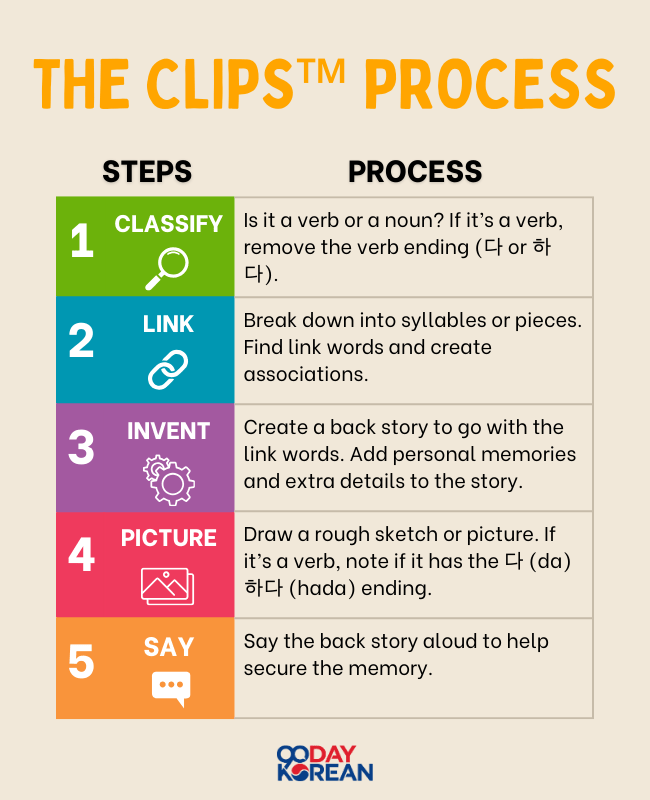
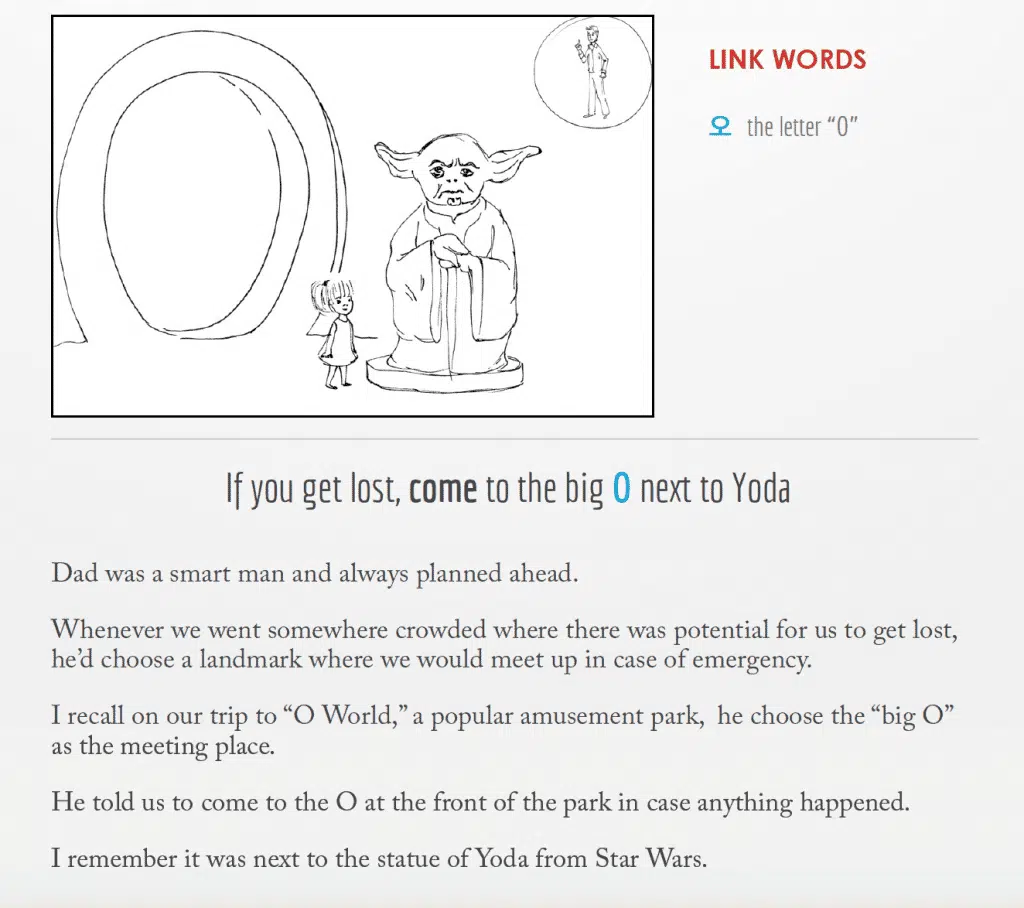

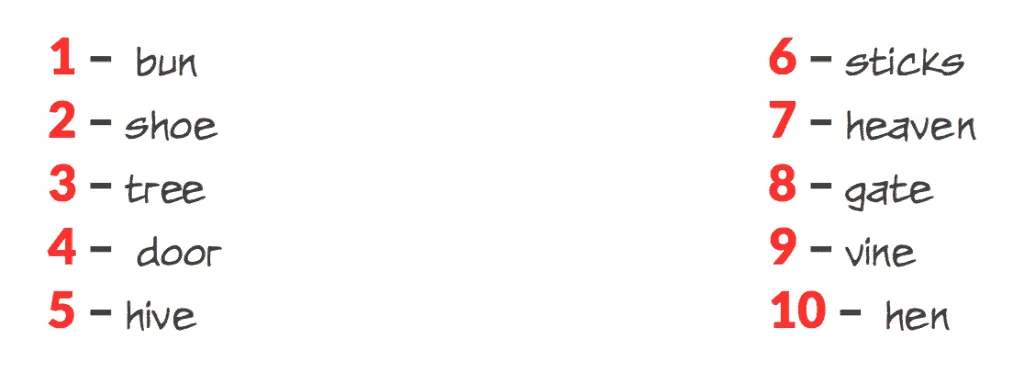
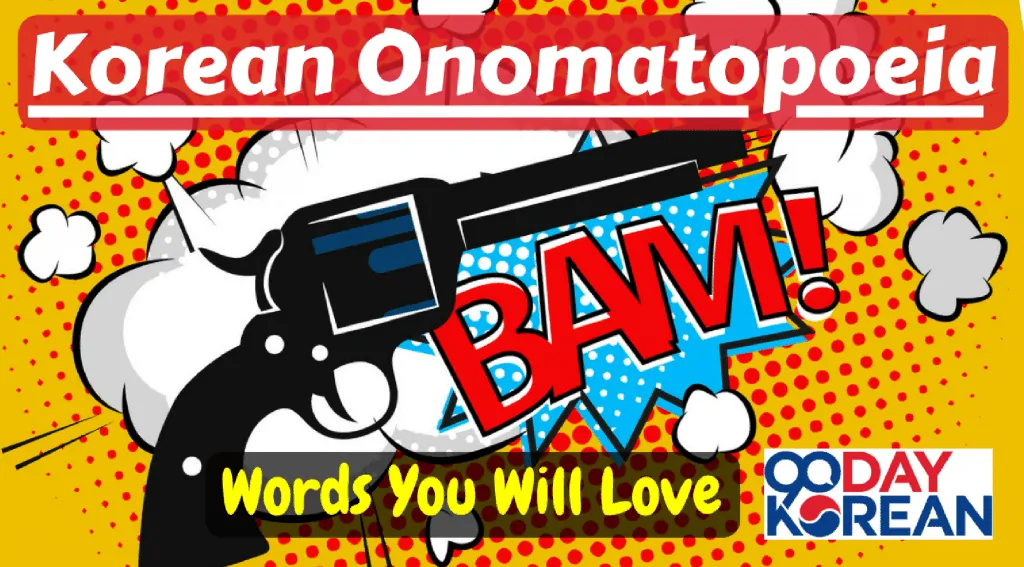
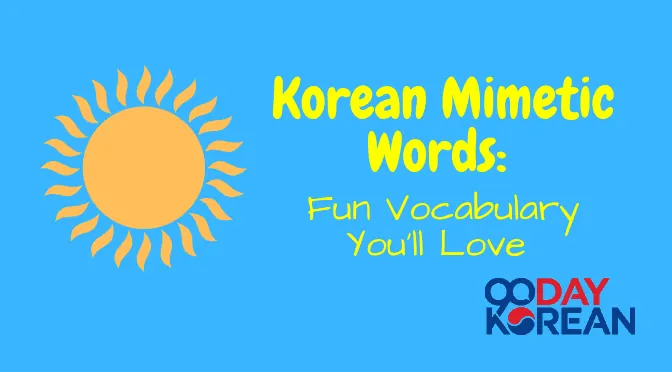
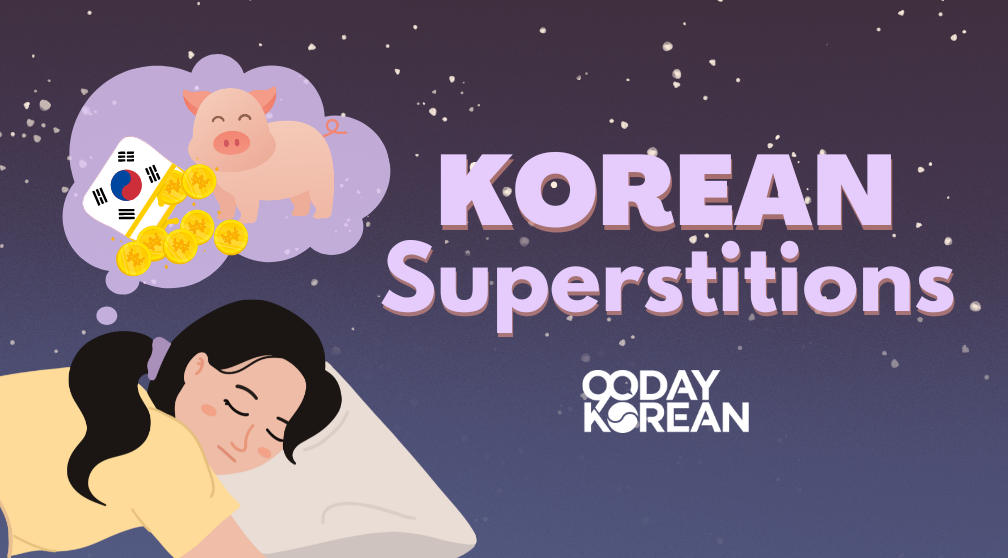

Another thing that helps is hand signals, like acting out the verb when you say it, or noun even, but verbs are easier, it really helps. plus it also eliminates the having to have english in there and its just korean.
Awesome! We’re glad that it has been valuable to you. ^^
I liked the clips technique. This really helped me. Thanks a lot !!! Can u tell me one thing that how will we write Sejal in Korean . Please ????
You can write 세잘. ^^
This technique has really helped me. Thank you.
That’s great! It’s our pleasure. We’re glad that it has been valuable to you. ^^
I live the CLIPS system. Just this lesson made it so much easier for me to retain and recall words that I reviewed before. Thank you!!!
Sure, it’s our pleasure. We’re glad that it has been valuable to you. ^^